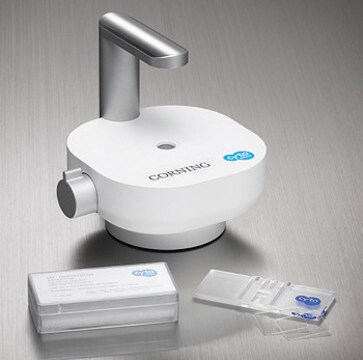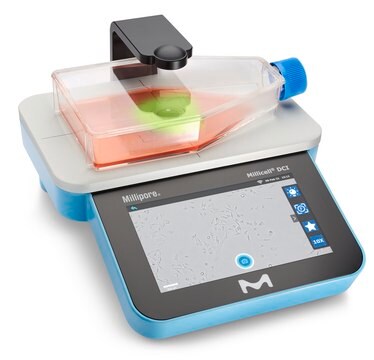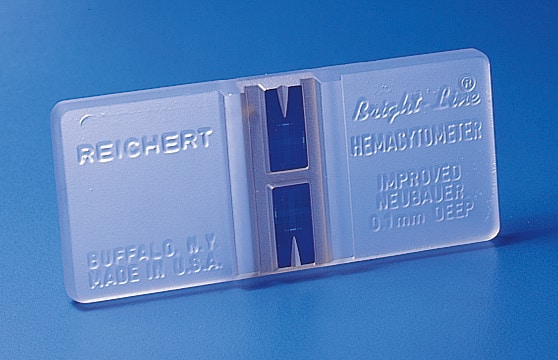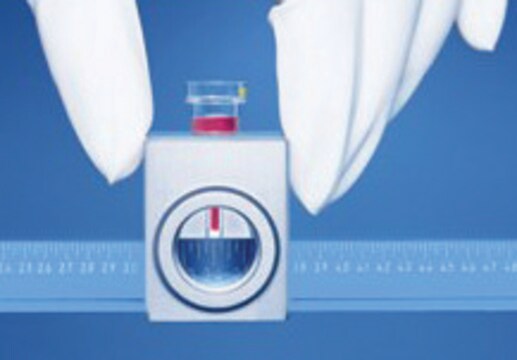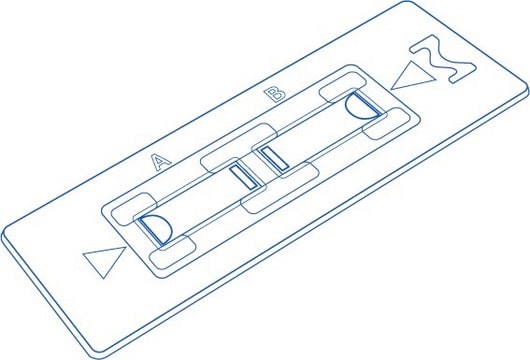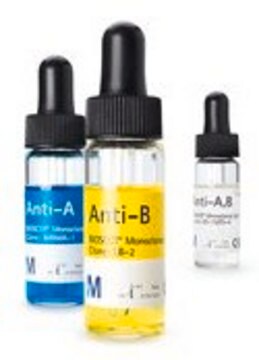MESC 20
11120814, mouse embryo, Adherent monolayer of spheroidal cells.
Synonym(s):
MESC-20, MESC20
Sign Into View Organizational & Contract Pricing
All Photos(1)
About This Item
UNSPSC Code:
41106514
Recommended Products
product name
MESC 20, 11120814
biological source
mouse embryo
growth mode
Adherent
karyotype
XY, diploid
morphology
Adherent monolayer of spheroidal cells.
receptors
Not specified
Looking for similar products? Visit Product Comparison Guide
Cell Line Origin
Mouse embryonic stem cell
Cell Line Description
The germ-line competent cell line MESC 20 was established from the inner cell mass of a 3.5 day male pre-implantation mouse embryo (strain 129/Olac). These pluripotent cells retain the ability to participate in normal embryonic development. Differentiation of the cells is inhibited by Leukaemia Inhibiting Factor (LIF). Addition of LIF allows culture without the use of a feeder layer.
DNA Profile
Not specified
Culture Medium
MEF medium consists of DMEM/F12, 10% FBS, 2 mM L-Glutamine (G7513) and 0.1 mM 2-Mercaptoethanol (M6250). KSR medium consists of DMEM, 20% Serum Replacer, 2 mM L-Glutamine (G7513), NEAA, 0.1 mM 2-Mercaptoethanol (M6250) and 1000 Units/ml LIF.
Subculture Routine
The MESC lines can be grown without the use of mitotically inactivated feeder cells (Brown et al., 1992 PMID: 1483967). However, the cells supplied by Sigma have been grown on mitomycin treated primary mouse embryonic fibroblasts to ensure the cells are maintained in an undifferentiated state. Mouse embryonic fibroblasts, STO (Sigma product number 86032003) or SNL 76/7 (Sigma product number 07032801) can be used. At ECACC plastic ware is pre-coated with gelatine prior to plating feeder cells. Porcine gelatine (Sigma G1890) is dissolved in sterile water (0.5 g/500 ml) at 56◦C. The 0.1% solution is sterilized by filtration (0.22 μm). Add 0.1% gelatine to plastic ware to cover bottom, and incubate for 20 minutes at room temperature. Remove gelatine, wash with PBS once and replace with appropriate culture medium. The flask/dish must not be allowed to dry out. Feeder layers are prepared on the gelatinized flasks at least 24 hours in advance of being required. An ampoule is thawed in 37 °C water bath and the contents quickly transferred to a 15 ml centrifuge tube. MEF medium is added drop wise to 5 ml. Cells are centrifuged at 150 x g for 5 minutes at Room Temperature (RT). Cells are resuspended in 5 ml of MEF medium. Cells are counted and added to flasks containing the correct medium at 1-3 x 104 cells/cm2.An ampoule of ES cells is thawed in 37 °C water bath and the contents quickly transferred to a 15 ml centrifuge tube. KSR medium is added drop wise to 5 ml. Cells are centrifuged at 150 x g for 5 minutes. Cells are resuspended in 5 ml of KSR medium. The prepared feeder flask is washed once with PBS and KSR medium added. ES cells should be plated at 4-5 x 104 cells/cm2. Cultures must be incubated in a humidified 5% CO2/95% air incubator at 37 °C. A 100% media change must be performed every day and cells passaged every 2-3 days. Colonies must not be allowed to touch each other as overgrowth will result in differentiation.
Other Notes
Additional freight & handling charges may be applicable for Asia-Pacific shipments. Please check with your local Customer Service representative for more information.
Certificates of Analysis (COA)
Search for Certificates of Analysis (COA) by entering the products Lot/Batch Number. Lot and Batch Numbers can be found on a product’s label following the words ‘Lot’ or ‘Batch’.
Already Own This Product?
Find documentation for the products that you have recently purchased in the Document Library.
Our team of scientists has experience in all areas of research including Life Science, Material Science, Chemical Synthesis, Chromatography, Analytical and many others.
Contact Technical Service